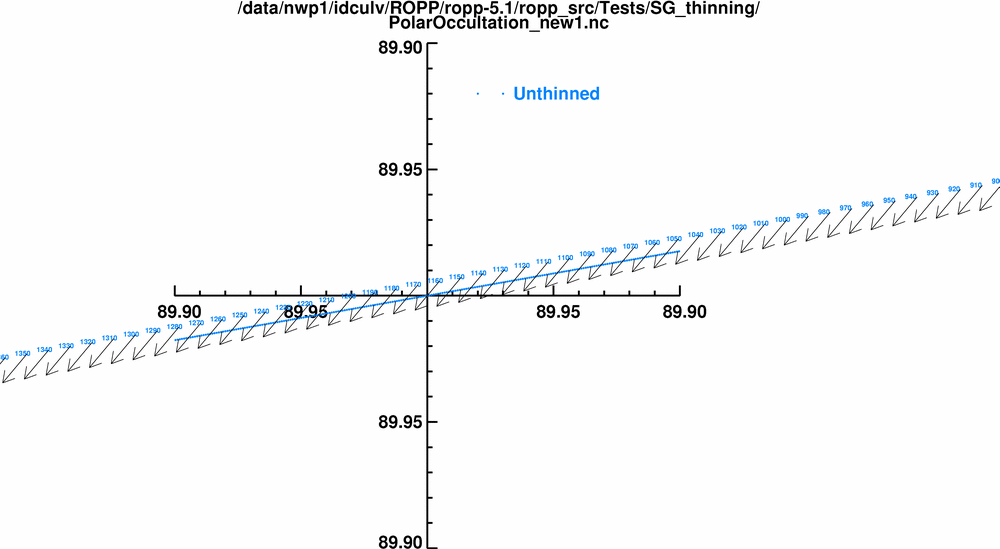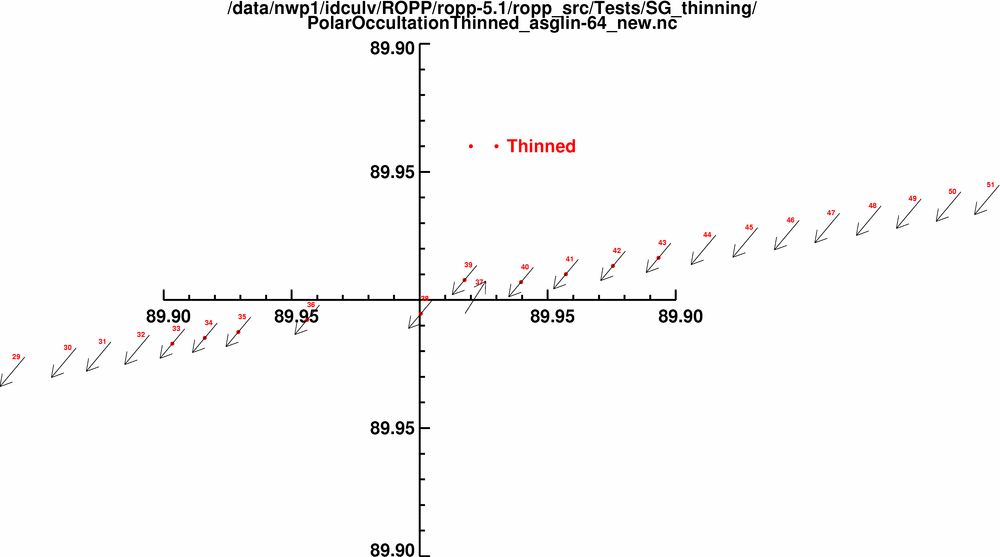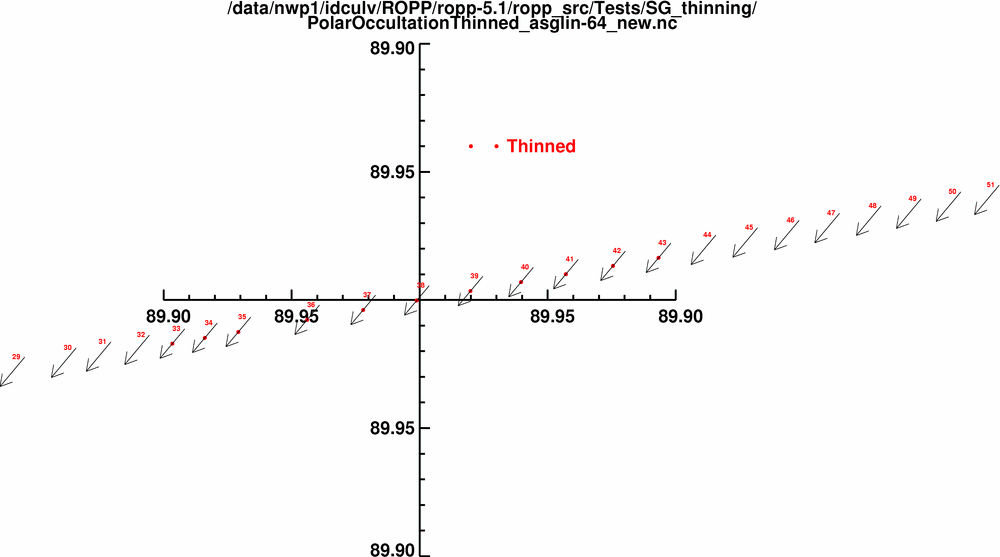Opened 16 years ago
Closed 14 years ago
#190 closed defect (fixed)
Thinning of pole-crossing occultations with S-G pre-smoothing
| Reported by: | Huw Lewis | Owned by: | Ian Culverwell |
|---|---|---|---|
| Priority: | minor | Milestone: | 6.0 |
| Component: | ropp_io | Version: | 3.0 |
| Keywords: | thinner, S-G | Cc: |
Description
See Ticket #171 for initial queries about the thinner implementation of occultations crossing the +/-180 degree line and the pole.
Investigations showed no problems in either case using Log or Lin thinning methods. For methods using Savitsky-Golay pre-smoothing, an outlier point was found for thinning longitude for cases where an occultation crosses the pole (see Figure 3 of attachement to #171). This geometry may be impossible for current LEO-GPS configurations, but a fix should be investigated.
Attachments (4)
Change history (9)
comment:1 by , 15 years ago
| Milestone: | 5.0 → 6.0 |
|---|---|
| Owner: | set to |
| Status: | new → assigned |
comment:2 by , 14 years ago
| Milestone: | 6.0 → 5.1 |
|---|
With Axel's help we have derived a (pseudo-)occultation that passes over the N pole, as shown on this polar plot above the N pole:
(Numbers label every 10th point.)
Most of the thinning methods (inc EUM-247) work OK on this, but, as Huw found before, the Adaptive S-G ones struggle, eg asglin-64:
(Numbers label every point.)
This appears to be due to the interpolation of neighbouring points whose longitude changes by 180deg as the occultation crosses the pole. (The ASG routines use a wider interpolation window than other thinning methods, and are therefore more susceptible to this effect.)
A solution has been devised which involves making a polar stereographic projection of the (lon,lat)s for "polar" occultations (those within 5 deg of either pole). These local (x,y) coordinates, which vary continuously through the occultation, are then interpolated/thinned/smoothed, and are then transformed back into (lon, lat).
Doing this corrects the above thinned profile so that it looks like this:
It has been tested successfully in a variety of occultations (inc ones that cross the S pole, and ones along the 180E/W meridian).
I propose putting the fix (to ropp_io_thin.f90) into ROPP5.1.
by , 14 years ago
| Attachment: | polar_plot_unthinned_new.gif added |
|---|
by , 14 years ago
| Attachment: | polar_plot_thinned_asglin-64_old.gif added |
|---|
by , 14 years ago
| Attachment: | polar_plot_thinned_asglin-64_new.2.gif added |
|---|
by , 14 years ago
| Attachment: | polar_plot_thinned_asglin-64_new.gif added |
|---|
comment:3 by , 14 years ago
I realised that the azimuths may also need special treatment.
The above pics have been amended to show the azimuths (occultation bearings wrt N) as arrows. These were generated by pretending that we had a GNS at (-130E, 50N) and an LEO at (50E, 50N). This gives us an azimuth of 320 deg on the right of the plot, and 140 deg on the left. This changes by 180 deg as you cross the pole because the definition of "northward" changes by this amount; as you can see the physical directions are continuous across the pole.
Simply averaging the azimuths for pole-crossing occultations can therefore lead to problems, as can be seen on the second plot, where the azimuth of one point is reversed.
By interpolating sin(azi) and cos(azi) across the pole we can do better (2nd thinned plot). This because sin and cos change sign when azi changes by pi, so the tan is the same. By using atan2 (sin(azi), cos(azi)), we recover the azimuth that is appropriate for the location of the interpolated point.
The treatment of azimuth has also been included in the ropp5.1 base code.
comment:4 by , 14 years ago
| Owner: | changed from to |
|---|
comment:5 by , 14 years ago
| Milestone: | 5.1 → 6.0 |
|---|---|
| Resolution: | → fixed |
| Status: | assigned → closed |
Doesn't cause any problems at 5.1 or 6.0 beta testing. Closing ticket.




This open ticket was discussed as part of ROPP-5 DRI (20 May 2011). An action was raised to add a check and output an error message should such an occultation geometry occur and/or an anomaly in the thinned profile occur. The thinner limitation is noted in the Release Note (since ROPP-3), but it should be updated to include this error detection. To be implemented in ROPP-5, though a proper fix can be postponed to [ROPP-6].
Axel has since clarified that he expects this error message to also abandon further processing (and saving) of the affected profile.
Given that even just detecting the (potential) problem is not straightforward, and no offending real RO profile as been found which exhibits this problem to test the change; an artificial one - or more - will need to be created), we believe this action cannot be completed in the remaining time before the scheduled release of ROPP-5. Given the rarity of such occultations, and that DRI does not consider this a blocker, Axel has conceded (1/6/11) that this action can be postponed until ROPP-6 if it cannot be completed in the next 2 weeks.